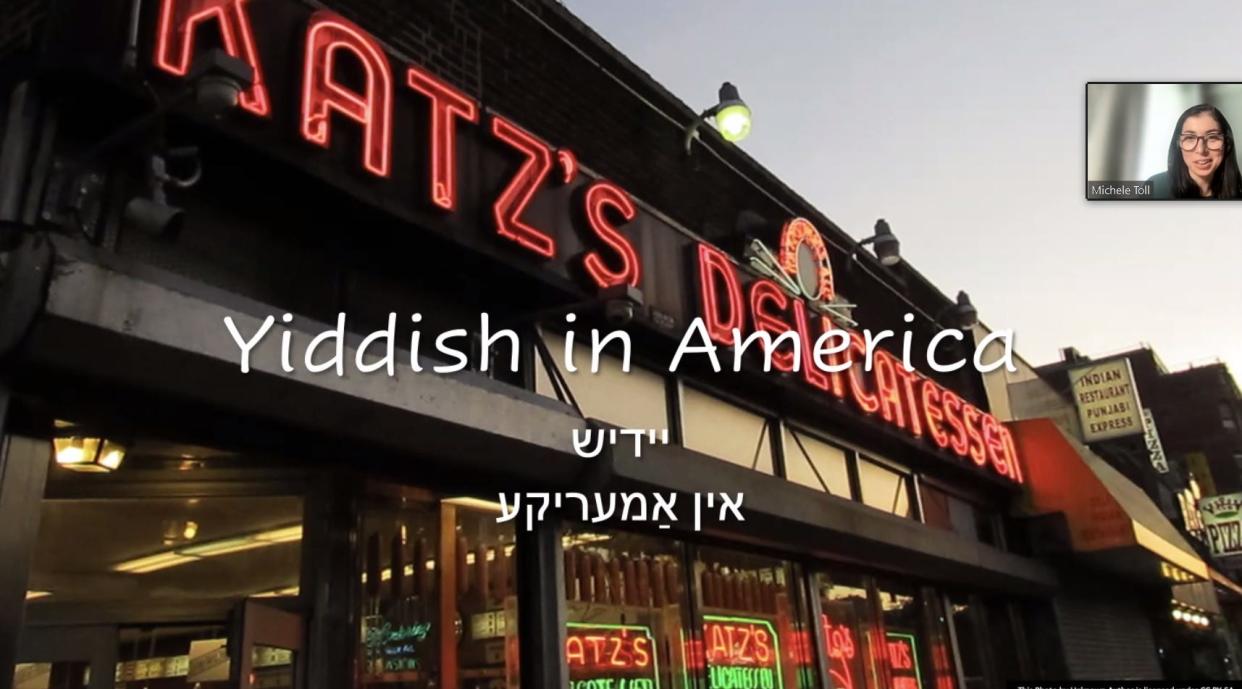MCCC professor discusses origin of Yiddish phrases in American culture

A professor at Monroe County Community College hosted a presentation discussing some of the common Yiddish words and phrases that have worked their way into everyday American English.
Michelle Toll, Assistant Professor of English at MCCC, recently presented “Yiddish Words and Phrases in American Culture” via Zoom. Numerous MCCC staff and faculty, as well as community members, attended the session.
Toll began the session by noting that May is Jewish-American Heritage month. She also noted that there are very few – about a quarter million – Yiddish speakers in the United States today, most of them Hasidic Jews living on the East Coast.
She added that Yiddish should not be confused with religious Hebrew language, though the two languages share similarities.
“Yiddish is a secular language, even though it was mostly Jewish people who spoke it,” Toll said. “It wasn’t the language of prayer and religious texts. It was for everyday use.”
MCCC President Kojo Quartey asked how vast the differences are between Hebrew and Yiddish. Toll answered that a Hebrew speaker would not understand a Yiddish speaker except for some scattered words.
Toll explained that although the language is written with Hebrew characters, its main influences come from European roots. For example, German and Yiddish have a common root language, and Yiddish followed various expulsions and migrations of Jewish people throughout the Middle Ages.
Toll explained that there were three primary Jewish diasporas that moved around the world through the ages – the Ashkenazi settled mostly in eastern Europe and was the group that mostly spoke Yiddish.
Toll said that while Yiddish has a lot of Germanic grammar, there are influences from other Romantic languages, as well, from the Ashkenazi movement through Europe over the years.
The lesson then moved to the sounds of the Yiddish language. She played a clip from the Netflix show “Shtisel,” which featured characters speaking to each other in Yiddish. This highlighted the similarity in sound to the German language.
Toll said that Yiddish was once a vastly spoken language, but it has declined drastically over the years. She said that, prior to Holocaust, there were about 11 to 13 million Yiddish speakers in the world. Around 85% of those who died in the Holocaust spoke Yiddish.
Throughout American history, groups of Jewish immigrants brought the language with them. Toll said that this resulted in Yiddish publications such as New York’s The Morning Journal, which ran from 1901 to 1971.
The second half of the session focused mostly on examples of commonly used Yiddish phrases in everyday America. First, however, Toll explained that it is important to remember that Yiddish words and phrase have both denotative and connotative meanings, much like English. For example, “shmate” is literally defined as a rag or ripped garment. However, the same word is used sometimes to describe a child’s “blankie.”
“Mensch” is another example. The word comes from the same German word, which simply refers to a man. However, in Yiddish, it describes a person of integrity.
Other examples of common Yiddish words that Americans know today include “shlep,” “shtick,” “chutzpah,” “schmooze,” and “nosh.”
Yiddish also has some words that have no direct English translation. For example, “machetunim” is a word that describes (plurally) mother- and father-in-law of one’s child.
“We don’t have a word for that,” Toll explained. “It’s a very useful word.”
For more information about upcoming MCCC-hosted events, go to www.monroeccc.edu/events.
This article originally appeared on The Monroe News: MCCC professor discusses origin of Yiddish phrases in American culture

